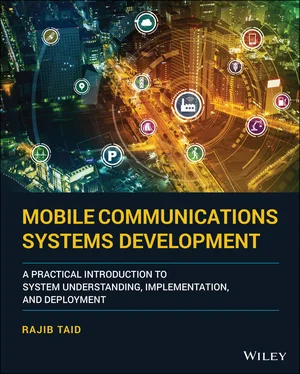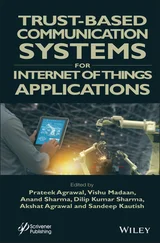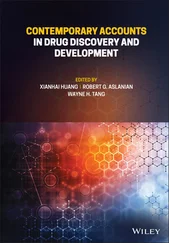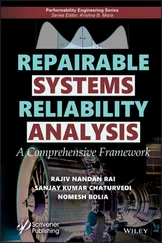How Does ASN.1 Notation Result in a Compact Encoding
It was described in Section 4.1.1that the air interface Layer 3 messages are encoded and decoded on the octet (8 bits) level in TLV format. Depending on the IE type, it may be required to encode the type/IEI (T), length (L), and value (V) of an IE in a message. The overall length of the encoded message becomes larger. However, in the ASN.1 method,
The type/IEI is never encoded and transmitted, and
Encoding the length and value is also optional if both sender and receiver already know it.
Because of these encoding rules, the size of the encoded message becomes compact in comparison to the TLV method encoding described above.
As an example, consider an IE with a value = 5 to be encoded and transmitted in TLV format as well as using PER. An illustration is shown in Figure 4.7. Type (T), Length (L), and Value (V) each have a length of 1 octet.
From Figure 4.7, it is observed that the PER encoding method results only in 3 bits of the IE's value to be transmitted, in comparison to 24 bits in its TLV encoding format. This is because in the PER method, the Type is never used, and Length may not be used during encoding of an IE.
Example 4.4mentions typical LTE and 5G NR RRC layer signaling messages which are defined using the ASN.1 format described above.
4.1.6 Direct/Indirect Encoding Method
The encoding and decoding methods of mobile communications systems and network messages as mentioned in the preceding sections apply, in general, to all the messages defined in a particular mobile communications system such as the GSM, GPRS, UMTS, LTE and 5G NR systems. There could be other encoding and decoding methods that are applicable to a particular message defined only in a particular mobile communications domain. Two such methods are Direct Encoding and Indirect Encoding . They are used in GSM Layer 3 Radio Resource Management layer's Immediate Assignment message while allocating a list of hopping radio frequencies from the BSC to the Mobile station.

Figure 4.7 Illustration: TLV Vs PER encoding method.
Example 4.4LTE and 5G NR Air Interface RRC Layers: RRC Connection/Setup Request ASN.1 Message
The LTE RRC ConnectionRequest or the 5G NR RRCSetupRequest message is used by a UE toward the LTE eNodeB or 5G NG‐RAN to request the establishment of an RRC signaling connection. For the ASN.1 definition of the LTE RRC ConnectionRequest or NR RRCSetupRequest message, refer to TS 36.331 [94] and TS 38.331 [116]. The RRC ConnectionRequest or RRCSetupRequest message carries the following information to the eNodeB:
Initial UE identity,
Establishment cause/purpose of the connection request, e.g. emergency call, data, signaling, voice call, and so on, and
A randomly generated reference value.
4.1.7 Segmented Messages over the Air Interface
It was mentioned in Section 4.1.4that the GPRS RLC/MAC layer messages are encoded/decoded at bit level using CSN.1 [10] method. Even the presence or absence of a single bit of information in a particular communications signaling message matters a lot for the receiver of the message because it may not be able to decode the rest of the received message successfully. Sometimes, if the complete information to be sent does not fit in a single signaling message, the same may be transferred in a segmented way, and this is indicated by a presence of a bit in the first message segment already sent to the receiver.
Similarly, the segmentation of the New Radio (NR) RRC layer messages i.e. RRCReconfiguration or RRCResume , in DL direction, and UECapabilityInformation , in UL direction, has been introduced as part of the 5G system Release 16. This is due to the limitation of the maximum PDU size of 1900 bytes as supported by the NR PDCP layer. The 5G NR air interface control plane protocol layer shall be described later in Chapter 18
4.1.8 Piggybacking a Signaling Message
To reduce the exchange of signaling messages overhead between mobile devices and the network over the air interface or other interface, sometimes a signaling message is attached to another signaling message that is being scheduled and already transmitted. Such a mechanism of attaching a signaling message as part of another signaling message is known as the piggybacking of a message. The piggybacked message may be used to request additional RRs from the network to start data transfer in the opposite direction or to trigger the start of a new signaling procedure between the mobile device and the network. The following Examples 4.5to 4.7shall clarify the concept and purpose of piggybacking a signaling message into another message.
Air Interface Signaling Messages
Example 4.5Piggybacking of GSM Air Interface Complete Layer 3 Information Using SCCP
In the case of the GSM system, the SS7 protocol stack is used to exchange messages between the GSM and the MSC over the A‐interface. The Signaling Connection Control Part ( SCCP ) layer is a part of the SS7 protocol stack. GSM Complete Layer 3 Information is used to transport all the initial signaling connection messages, between the MS and MSC, piggyback with the SCCP protocol message. Examples of GSM system initial messages are – CM SERVICE REQUEST , which is used for a mobile originated call, LOCATION UPDATE REQUEST, which is used for location area update request from MS to the CN, etc.
Example 4.6 Piggybacking Using LTE or 5G NAS Layer Signaling Message
In the LTE or 5G system also, piggybacking of a signaling message, e.g. piggybacking an SM layer message to an MM layer message, is used. In the LTE/EPS, piggybacking of NAS messages is used for the bearer management procedure in the downlink direction. In the uplink direction, piggybacking of the NAS message is used only for transferring the initial NAS message during connection setup. For example, the LTE/EPS ATTACH Request message is send piggybacked with the RRCConnectionSetupComplete message over the LTE air interface between UE and E‐UTRAN.
Similarly, in the 5G NR system, the NAS layer RegistrationRequest (toward the 5G Core Access and Mobility Management Function (AMF)) message is piggybacked to the RRCSetupComplete message from a UE to the NG‐RAN.
CN Signaling Messages
Example 4.7Piggybacking GTPv2 Control Plane Messages
In the LTE/EPS and 5G systems, the GTPv2 control plane signaling messages are used in a couple of logical interfaces, for example, between the LTE/EPS MME and the S‐GW and S‐GW and P‐GW. The fifth bit of a GTPv2 control plane header, 3GPP TS 29.274 [70], contains a field called “ P ” which indicates the presence of a further piggybacked GTPv2C message along with the current GTP GTPv2C messages. For example, a Create Session Response message from the S‐GW to the MME may contain the Create Bearer Request message as well as the piggybacked message for the MME. In this case, the “P” flag in the header of the Create Session Response message shall be set to 1.
4.2 Encoding/Decoding of Signaling Messages: RAN and CN
In the previous sections, we have discussed the encoding and decoding of signaling messages between a UE/MS and their respective RAN of the GSM, UMTS, LTE, and 5G NR systems over their respective air interface. To perform certain functions and procedures between the RAN and the CN, they also exchange signaling or control plane messages over the respective logical interface. The IEs of a signaling or control plane message exchanged over the concerned logical interface between the RAN and CN are packed and unpacked using a particular encoding and decoding method, which are described below:
Читать дальше













